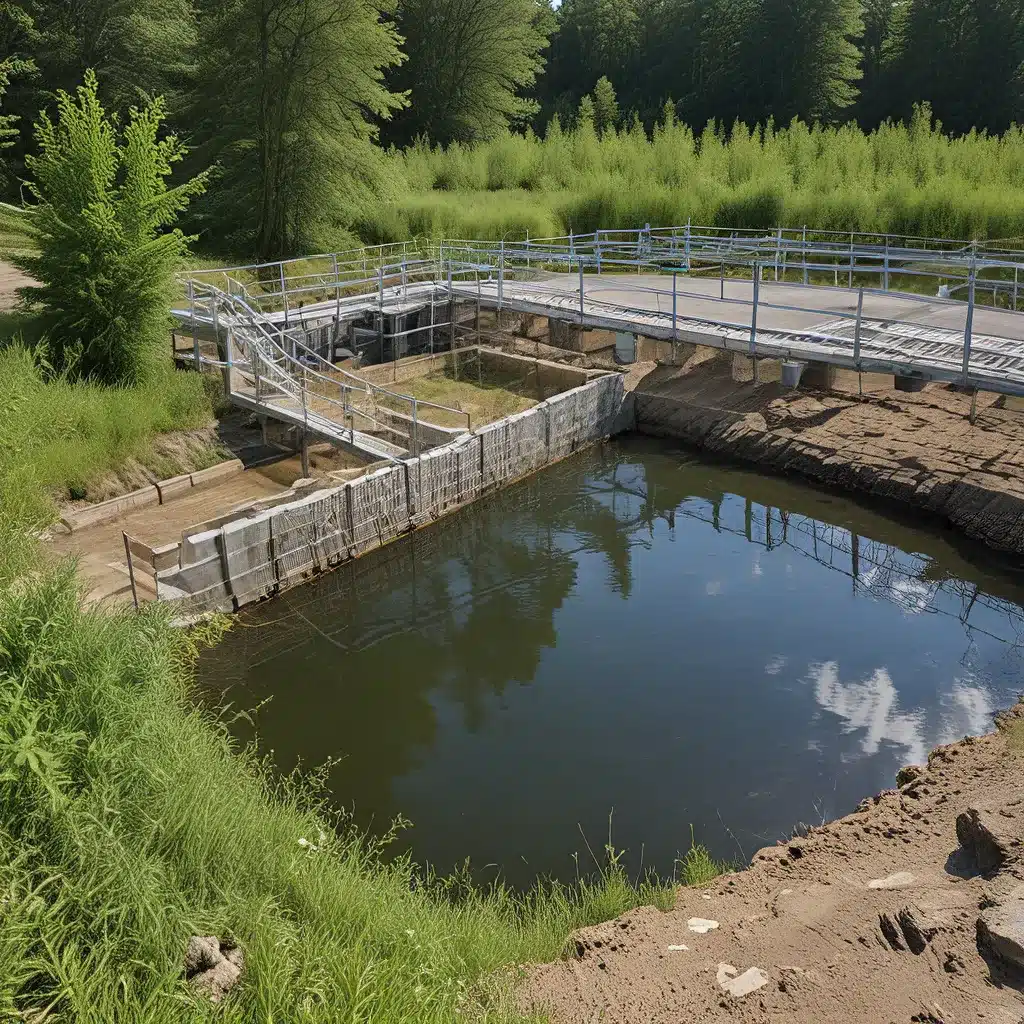
Ah, the world of water treatment – a realm where the fate of our precious natural resources hangs in the balance. As an environmental enthusiast, I’ve always been fascinated by the intricate dance between science, technology, and our collective responsibility to safeguard our waterways. And let me tell you, the secrets hidden within this domain are nothing short of captivating.
Tackling the Menace of PFAS
Picture this: you’re enjoying a refreshing sip of water, blissfully unaware of the invisible foes lurking within. These insidious compounds, known as per- and polyfluoroalkyl substances (PFAS), have crept their way into our water supplies, posing a significant threat to the environment and our health. These synthetic chemicals, often used in manufacturing processes and everyday products, have a universal presence in our wastewater systems, stemming from industrial discharges, runoff, and the leaching of consumer goods.
As researchers have discovered, traditional wastewater treatment methods are ill-equipped to handle PFAS effectively. Imagine trying to catch a herd of greased-up squirrels with your bare hands – that’s the kind of challenge we’re facing. Inadequate PFAS wastewater treatment can lead to the release of these substances into our environment, perpetuating the cycle of contamination.
Unraveling the Complexities
But fear not, my fellow water warriors, for the secrets to tackling this formidable foe are slowly being unlocked. Comprehensive PFAS treatment is a pressing need, and researchers worldwide are rising to the occasion, exploring innovative solutions to prevent the further spread of these contaminants.
Advancements in analytical techniques, such as liquid chromatography-mass spectrometry (LC-MS), have enabled us to detect and quantify a wide range of PFAS compounds in water samples. This newfound visibility is crucial for designing effective treatment strategies, as we can now pinpoint the exact culprits lurking in our wastewater streams.
Moreover, governments and environmental agencies have recognized the urgency of the situation, implementing regulations and guidelines to address PFAS in wastewater. In the United States, for example, the Environmental Protection Agency (EPA) has issued guidelines and health advisories for specific PFAS compounds, signaling a renewed commitment to safeguarding our water resources.
Pioneering PFAS Treatment Technologies
But the real magic happens when we delve into the realm of cutting-edge PFAS treatment technologies. Think of it as a high-stakes game of water purification “Capture the Flag,” where we’re constantly one-upping the competition.
One of the standout players in this arena is activated carbon adsorption. This method capitalizes on the remarkable adsorptive properties of activated carbon, which has a high surface area and a strong affinity for PFAS molecules. Picture a sponge, but one that’s laser-focused on trapping those pesky PFAS compounds. Granular activated carbon, in particular, has proven its worth, removing both PFAS and other organic contaminants through adsorption.
But wait, there’s more! Membrane filtration techniques, such as reverse osmosis and nanofiltration, are also making waves in the PFAS treatment world. These molecular sieves function like bouncers at a nightclub, allowing water molecules to pass through while barring the entry of larger PFAS compounds. Nanofiltration, in particular, offers pinpoint precision, selectively rejecting larger PFAS species based on size and charge.
And let’s not forget the ion exchange resins – the water treatment equivalent of a highly trained negotiator. These specialized resins operate by replacing ions in the wastewater with PFAS molecules, effectively trapping them and preventing their release into the environment. Their capacity for PFAS removal ensures prolonged and efficient operation, making them a valuable asset in the fight against these persistent pollutants.
Unleashing the Power of Innovation
But the secrets of environmentally responsible water treatment don’t stop there. Advanced Oxidation Processes (AOPs) offer a different approach, harnessing the power of strong oxidants like ozone or hydroxyl radicals to chemically transform PFAS compounds into less harmful byproducts. It’s like using a sledgehammer to break down a wall of stubborn LEGO bricks.
And if that wasn’t enough, the brilliant minds in the water treatment community have also explored the potential of electrochemical treatment and bioremediation. Electrochemical treatment uses electric currents to destabilize PFAS molecules and facilitate their removal, while bioremediation taps into the hidden talents of microorganisms to degrade or transform these contaminants.
But the real showstopper in this water treatment extravaganza is the Transcend Design Generator – a powerful tool that optimizes PFAS wastewater treatment processes. This innovative technology leverages user input and proprietary databases to conduct process simulations, size equipment, and generate essential documentation. It’s like having a personal assistant who can anticipate your every move and ensure precision and efficiency in your PFAS treatment projects.
Embracing the Future of Water Treatment
As we dive deeper into the secrets of environmentally responsible water treatment, it’s clear that the future is bright, but not without its challenges. Understanding the efficiency of PFAS removal methods and the various factors influencing their performance is essential to safeguarding our environment from these insidious compounds.
Robust assessment methods, the study of PFAS fate and transport, and the development of reliable analytical techniques are all crucial pieces of the puzzle. And let’s not forget the importance of real-time monitoring solutions, which provide a dynamic view of PFAS concentrations in wastewater, enabling us to respond swiftly to contamination events.
But the true key to unlocking the secrets of water treatment lies in our collective commitment to collaboration. Wastewater treatment plants, industries, researchers, and regulatory agencies must work hand-in-hand to pioneer innovative solutions, share knowledge, and ensure the protection of our precious water resources.
So, my friends, let’s embark on this journey of discovery together. Dive in, explore the wonders of water treatment, and become the environmental guardians our rivers, lakes, and oceans deserve. After all, the Inland Waters team is always here to lend a helping hand and guide you through the complexities of this ever-evolving landscape.


